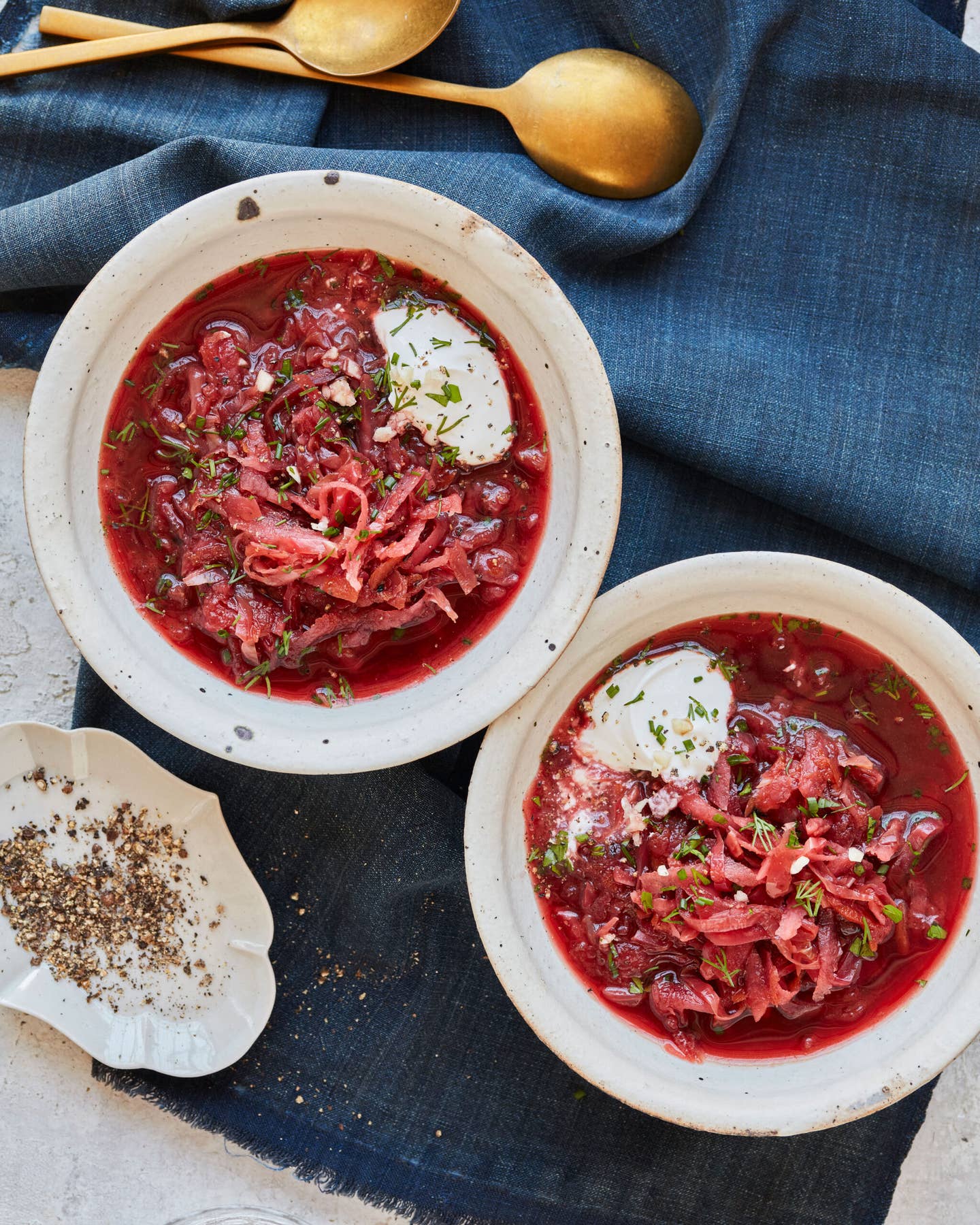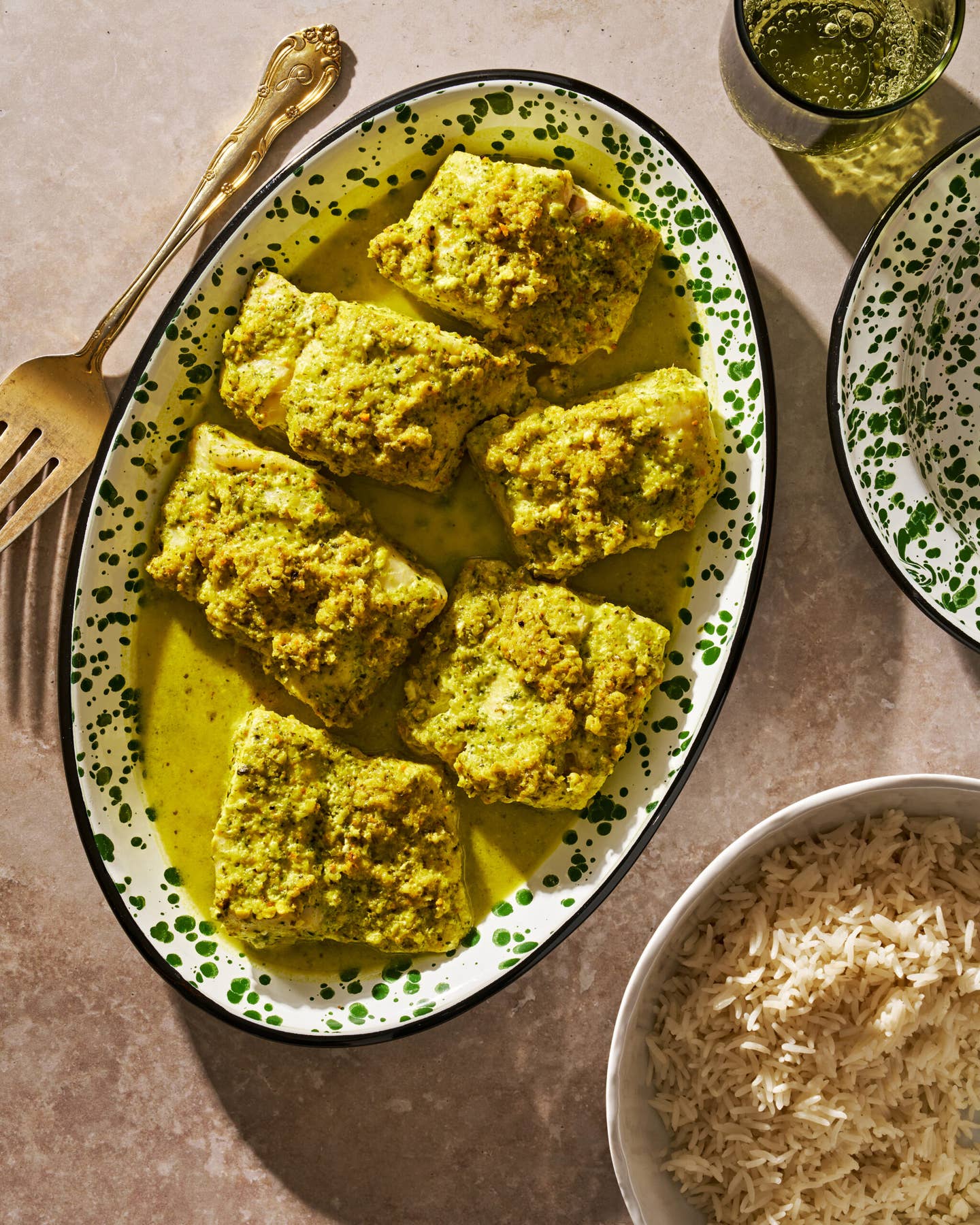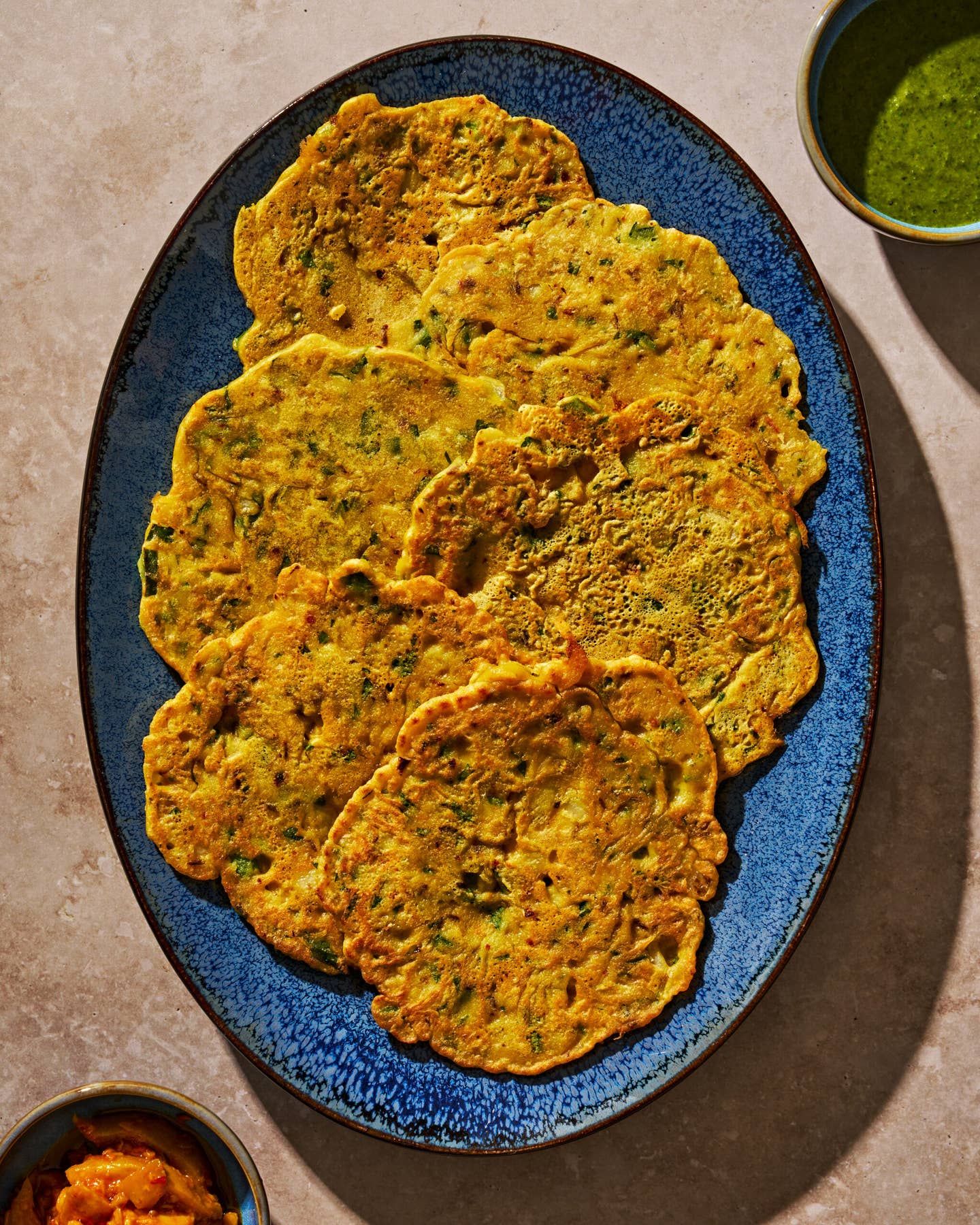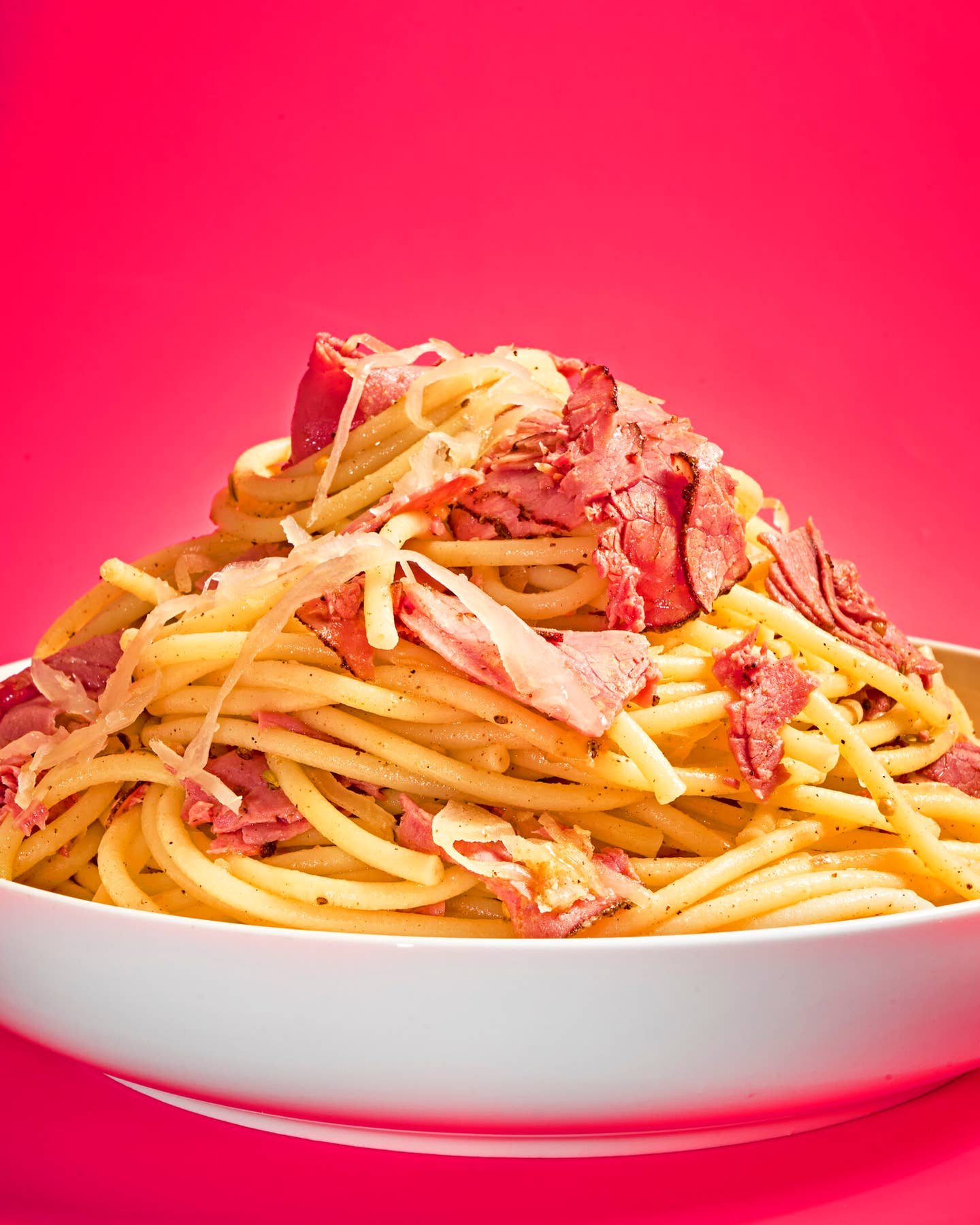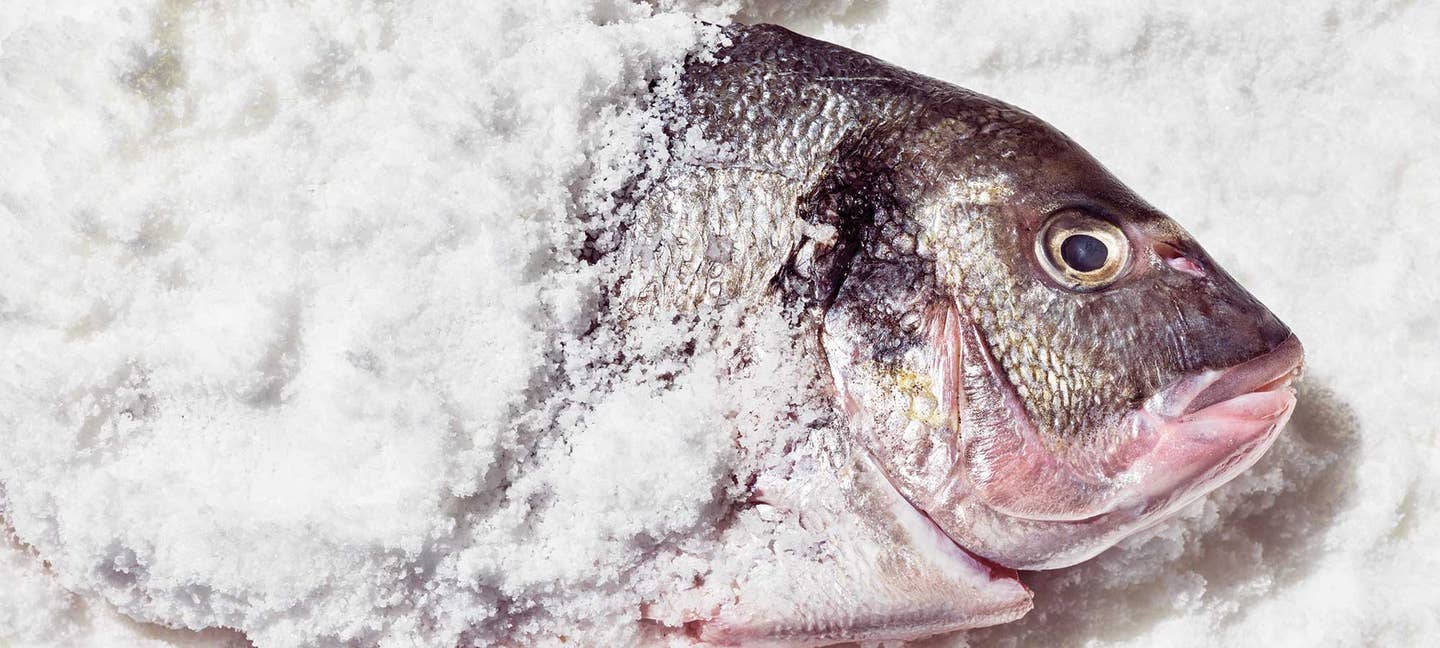
Salt Baking is the Key to Juicier Birds, Meats, and Seafood
This old fishermen’s technique from Menorca, Spain, works with whole fish, shrimp, and more
On the edge of san pedro del pinatar, a fishing village in the Murcia region of Spain’s Mediterranean coast, a vast, irregular grid of salt flats juts out into the sea. Seawater floods them each spring, then evaporates each summer, when workers come to rake out the white- and pink-tinged crystals and pile them in glistening mounds to dry in the sun. These salt flats, or salinas, were created during the Roman Empire and have been in use ever since, providing sal to help season, conserve, and even bake—as is the case for one of Murcia’s most famous dishes, dorada a la sal. The region’s fatty, succulent sea bream, or dorada, is baked whole in a crust of extra-coarse salt, which hardens into a snug shell during baking, allowing the bream to steam entirely in its own juices. The result is a moist, flavorful fish with tender white flakes (and, no, it doesn’t taste too salty).
As I’ve learned during my time living and cooking in Spain, salt baking is widely adaptable and works wonders with whole shrimp and sardines, young chickens or Cornish hens, and even meaty or robust vegetables such as eggplant or onions. It adheres perfectly to the general theory of cooking along the Spanish coast, where the goal is to heighten, rather than disguise, the natural flavors of the freshest ingredients.
Whole Fish
Locals credit Spanish fishermen with the creation of this dish: During their days at sea, they’d place a whole fish on a marble slab, bury it in salt, and cook it over a small fire. It was simple and practical, and involved just two abundant and accessible ingredients.
Poultry
Salt baking small fowl like Cornish hens, young chickens, or even duck legs helps to retain moisture and keep the meat succulent. A second salt-free bake provides a lacquered skin without the risk of drying out the meat.
Salt-Baked Cornish Game Hens with Shallots and Orange Sauce
Don’t skip the shallots—they come out sweet and jammy after baking in a salt cave. Get the recipe for Salt-Baked Cornish Game Hens with Shallots and Orange Sauce »
Shellfish
Shellfish aren’t traditionally salt-baked in Spain, but the shells and heads make a natural protective barrier that prevents shrimp and lobster tails from absorbing too much salt.
Salt-Baked Shrimp with Caper Sofrito
Spain’s prized gambas—giant red prawns—are typically served grilled or in paella-like dishes, but they also take well to salt baking. Get the recipe for Salt-Baked Shrimp with Caper Sofrito »
Salt Baking Technique
Although the quantity of salt required might seem startling at first, rest assured you can tuck a whole meal’s worth of sides around your main course. Root vegetables like onions, shallots, or potatoes will roast down to a perfectly seasoned, no-fuss side dish as they bake. Scatter veggies—skins and all—around the centerpiece, leaving at least an inch between them, before burying it all beneath its blanket of salt.
Step 1: Mix the Salt
Begin with very coarse salt; there are pebbly, extra-coarse versions in Spain, but coarse kosher works just fine. You will need about 4–5 pounds. Use your hands to mix the salt with egg whites in a large bowl until it feels like damp sand. The egg helps the salt form a hard shell during baking, making it easier to remove in large pieces. (If you feel confident, you can moisten the salt with water instead of egg whites, as the fishermen do.)
Step 2: Form the Salt Crust
Line a rimmed baking sheet or roasting pan with a piece of parchment paper, then spread around enough of the salt mixture to form a layer about half an inch thick. Gently pat it down to pack evenly. Lay the fish, meat, or whatever you are baking on top, then cover completely with enough salt to fully bury and seal the ingredients in an even layer at least 1/2-inch thick. Gently pat down the top layer to pack evenly.
Step 3: Bake
Carefully, without shifting the salt, transfer the pan to a hot oven (425°F). A high temperature encourages a firm shell to form quickly, ensuring no flavors or moisture can escape. The salt crust might brown slightly and begin to crack in some places. However tempting, do not pry open the shell to check for doneness. Follow recipe times closely, or estimate about 15 minutes per pound for whole fish and about 1 hour for a 2-pound roast.
Step 4: Remove the Crust
Remove the pan from the oven, and let cool just slightly. Using a heavy wooden spoon or kitchen mallet, break the hot crust into large chunks. Hot steam will escape, so pull off the pieces carefully. Sweep aside loose grains, and gently lift out the buried item. (For whole fish, it may be easier to lift out just the fillets.) Working quickly to keep the warm juices from dissolving any salt, brush away any clinging grains with a pastry brush.
Keep Reading
Continue to Next Story
